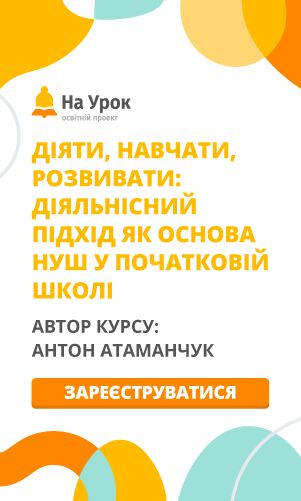Підсумковий урок з теми "Київ" за підручником А.Несвіт.

Read the text and choose true or false.
The Golden Gate (Zoloti vorota)is one of the most important architectural and historical monuments remaining from the Kyivan Rus’ period. Located in the southwestern part of ancient Kyiv, the Golden Gate (GG) was begun in 1037 during the reign of Yaroslav the Wise. It was constructed at about the same time as Saint Sophia Cathedral and functioned as the main triumphal entrance and as a defendable portal to the fortified section of the city. The GG was built of brick and stone and consisted of a tower for guards and the small church . The origin of the gate's name is unknown. It may have been named for the roof of the church, which was possibly covered with gold, or for the Golden Gate of Constantinople.
In 1240 the GG was partially destroyed by the Mongols; however, it remained in use as a portal until the middle of the 16th century. In 1648, after their victory over the Poles, Hetman Bohdan Khmelnytsky and his army made their triumphal entrance into Kyiv through the GG. In 1750 the gate's remains were covered with earth. The ruins were excavated in 1832 by the archeologist Kindrat Lokhvytsky, and the structure was reinforced with a metal framework. Of the original GG only the brick and stone walls and portions of the arch remain. Based on archeological excavations, scholars have created various models of the original GG, which was last restored in the early 1980s. A book about the GG, by Serhii Vysotsky, was published in Kyiv in 1982.
Question 1.The Golden Gate is one of the most important architectural and historical monuments remaining from the Kyivan Rus’ period.
Read the text and choose true or false.
The Golden Gate (Zoloti vorota)is one of the most important architectural and historical monuments remaining from the Kyivan Rus’ period. Located in the southwestern part of ancient Kyiv, the Golden Gate (GG) was begun in 1037 during the reign of Yaroslav the Wise. It was constructed at about the same time as Saint Sophia Cathedral and functioned as the main triumphal entrance and as a defendable portal to the fortified section of the city. The GG was built of brick and stone and consisted of a tower for guards and the small church . The origin of the gate's name is unknown. It may have been named for the roof of the church, which was possibly covered with gold, or for the Golden Gate of Constantinople.
In 1240 the GG was partially destroyed by the Mongols; however, it remained in use as a portal until the middle of the 16th century. In 1648, after their victory over the Poles, Hetman Bohdan Khmelnytsky and his army made their triumphal entrance into Kyiv through the GG. In 1750 the gate's remains were covered with earth. The ruins were excavated in 1832 by the archeologist Kindrat Lokhvytsky, and the structure was reinforced with a metal framework. Of the original GG only the brick and stone walls and portions of the arch remain. Based on archeological excavations, scholars have created various models of the original GG, which was last restored in the early 1980s. A book about the GG, by Serhii Vysotsky, was published in Kyiv in 1982.
Question 2. The Golden Gate is located in the southern part of ancient Kyiv.
The Golden Gate (Zoloti vorota)is one of the most important architectural and historical monuments remaining from the Kyivan Rus’ period. Located in the southwestern part of ancient Kyiv, the Golden Gate (GG) was begun in 1037 during the reign of Yaroslav the Wise. It was constructed at about the same time as Saint Sophia Cathedral and functioned as the main triumphal entrance and as a defendable portal to the fortified section of the city. The GG was built of brick and stone and consisted of a tower for guards and the small church . The origin of the gate's name is unknown. It may have been named for the roof of the church, which was possibly covered with gold, or for the Golden Gate of Constantinople.
In 1240 the GG was partially destroyed by the Mongols; however, it remained in use as a portal until the middle of the 16th century. In 1648, after their victory over the Poles, Hetman Bohdan Khmelnytsky and his army made their triumphal entrance into Kyiv through the GG. In 1750 the gate's remains were covered with earth. The ruins were excavated in 1832 by the archeologist Kindrat Lokhvytsky, and the structure was reinforced with a metal framework. Of the original GG only the brick and stone walls and portions of the arch remain. Based on archeological excavations, scholars have created various models of the original GG, which was last restored in the early 1980s. A book about the GG, by Serhii Vysotsky, was published in Kyiv in 1982.
Question 3. The Golden Gate was begun in 1037 during the reign of Hetman Bohdan Khmelnytsky.
The Golden Gate (Zoloti vorota)is one of the most important architectural and historical monuments remaining from the Kyivan Rus’ period. Located in the southwestern part of ancient Kyiv, the Golden Gate (GG) was begun in 1037 during the reign of Yaroslav the Wise. It was constructed at about the same time as Saint Sophia Cathedral and functioned as the main triumphal entrance and as a defendable portal to the fortified section of the city. The GG was built of brick and stone and consisted of a tower for guards and the small church . The origin of the gate's name is unknown. It may have been named for the roof of the church, which was possibly covered with gold, or for the Golden Gate of Constantinople.
In 1240 the GG was partially destroyed by the Mongols; however, it remained in use as a portal until the middle of the 16th century. In 1648, after their victory over the Poles, Hetman Bohdan Khmelnytsky and his army made their triumphal entrance into Kyiv through the GG. In 1750 the gate's remains were covered with earth. The ruins were excavated in 1832 by the archeologist Kindrat Lokhvytsky, and the structure was reinforced with a metal framework. Of the original GG only the brick and stone walls and portions of the arch remain. Based on archeological excavations, scholars have created various models of the original GG, which was last restored in the early 1980s. A book about the GG, by Serhii Vysotsky, was published in Kyiv in 1982.
Question 4. The GG functioned as the main triumphal entrance and as a defendable portal to the fortified section of the city.
The Golden Gate (Zoloti vorota)is one of the most important architectural and historical monuments remaining from the Kyivan Rus’ period. Located in the southwestern part of ancient Kyiv, the Golden Gate (GG) was begun in 1037 during the reign of Yaroslav the Wise. It was constructed at about the same time as Saint Sophia Cathedral and functioned as the main triumphal entrance and as a defendable portal to the fortified section of the city. The GG was built of brick and stone and consisted of a tower for guards and the small church . The origin of the gate's name is unknown. It may have been named for the roof of the church, which was possibly covered with gold, or for the Golden Gate of Constantinople.
In 1240 the GG was partially destroyed by the Mongols; however, it remained in use as a portal until the middle of the 16th century. In 1648, after their victory over the Poles, Hetman Bohdan Khmelnytsky and his army made their triumphal entrance into Kyiv through the GG. In 1750 the gate's remains were covered with earth. The ruins were excavated in 1832 by the archeologist Kindrat Lokhvytsky, and the structure was reinforced with a metal framework. Of the original GG only the brick and stone walls and portions of the arch remain. Based on archeological excavations, scholars have created various models of the original GG, which was last restored in the early 1980s. A book about the GG, by Serhii Vysotsky, was published in Kyiv in 1982.
Question 5. The GG was built of brick and stone .
The Golden Gate (Zoloti vorota)is one of the most important architectural and historical monuments remaining from the Kyivan Rus’ period. Located in the southwestern part of ancient Kyiv, the Golden Gate (GG) was begun in 1037 during the reign of Yaroslav the Wise. It was constructed at about the same time as Saint Sophia Cathedral and functioned as the main triumphal entrance and as a defendable portal to the fortified section of the city. The GG was built of brick and stone and consisted of a tower for guards and the small church . The origin of the gate's name is unknown. It may have been named for the roof of the church, which was possibly covered with gold, or for the Golden Gate of Constantinople.
In 1240 the GG was partially destroyed by the Mongols; however, it remained in use as a portal until the middle of the 16th century. In 1648, after their victory over the Poles, Hetman Bohdan Khmelnytsky and his army made their triumphal entrance into Kyiv through the GG. In 1750 the gate's remains were covered with earth. The ruins were excavated in 1832 by the archeologist Kindrat Lokhvytsky, and the structure was reinforced with a metal framework. Of the original GG only the brick and stone walls and portions of the arch remain. Based on archeological excavations, scholars have created various models of the original GG, which was last restored in the early 1980s. A book about the GG, by Serhii Vysotsky, was published in Kyiv in 1982.
Question 6. The origin of the gate's name is well-known.
The Golden Gate (Zoloti vorota)is one of the most important architectural and historical monuments remaining from the Kyivan Rus’ period. Located in the southwestern part of ancient Kyiv, the Golden Gate (GG) was begun in 1037 during the reign of Yaroslav the Wise. It was constructed at about the same time as Saint Sophia Cathedral and functioned as the main triumphal entrance and as a defendable portal to the fortified section of the city. The GG was built of brick and stone and consisted of a tower for guards and the small church . The origin of the gate's name is unknown. It may have been named for the roof of the church, which was possibly covered with gold, or for the Golden Gate of Constantinople.
In 1240 the GG was partially destroyed by the Mongols; however, it remained in use as a portal until the middle of the 16th century. In 1648, after their victory over the Poles, Hetman Bohdan Khmelnytsky and his army made their triumphal entrance into Kyiv through the GG. In 1750 the gate's remains were covered with earth. The ruins were excavated in 1832 by the archeologist Kindrat Lokhvytsky, and the structure was reinforced with a metal framework. Of the original GG only the brick and stone walls and portions of the arch remain. Based on archeological excavations, scholars have created various models of the original GG, which was last restored in the early 1980s. A book about the GG, by Serhii Vysotsky, was published in Kyiv in 1982.
Question 7. In 1240 the GG was totally destroyed by the Mongols.
The Golden Gate (Zoloti vorota)is one of the most important architectural and historical monuments remaining from the Kyivan Rus’ period. Located in the southwestern part of ancient Kyiv, the Golden Gate (GG) was begun in 1037 during the reign of Yaroslav the Wise. It was constructed at about the same time as Saint Sophia Cathedral and functioned as the main triumphal entrance and as a defendable portal to the fortified section of the city. The GG was built of brick and stone and consisted of a tower for guards and the small church . The origin of the gate's name is unknown. It may have been named for the roof of the church, which was possibly covered with gold, or for the Golden Gate of Constantinople.
In 1240 the GG was partially destroyed by the Mongols; however, it remained in use as a portal until the middle of the 16th century. In 1648, after their victory over the Poles, Hetman Bohdan Khmelnytsky and his army made their triumphal entrance into Kyiv through the GG. In 1750 the gate's remains were covered with earth. The ruins were excavated in 1832 by the archeologist Kindrat Lokhvytsky, and the structure was reinforced with a metal framework. Of the original GG only the brick and stone walls and portions of the arch remain. Based on archeological excavations, scholars have created various models of the original GG, which was last restored in the early 1980s. A book about the GG, by Serhii Vysotsky, was published in Kyiv in 1982.
Question 8. In 1648, after their victory over the Mongols , Hetman Bohdan Khmelnytsky and his army made their triumphal entrance into Kyiv through the GG.
The Golden Gate (Zoloti vorota)is one of the most important architectural and historical monuments remaining from the Kyivan Rus’ period. Located in the southwestern part of ancient Kyiv, the Golden Gate (GG) was begun in 1037 during the reign of Yaroslav the Wise. It was constructed at about the same time as Saint Sophia Cathedral and functioned as the main triumphal entrance and as a defendable portal to the fortified section of the city. The GG was built of brick and stone and consisted of a tower for guards and the small church . The origin of the gate's name is unknown. It may have been named for the roof of the church, which was possibly covered with gold, or for the Golden Gate of Constantinople.
In 1240 the GG was partially destroyed by the Mongols; however, it remained in use as a portal until the middle of the 16th century. In 1648, after their victory over the Poles, Hetman Bohdan Khmelnytsky and his army made their triumphal entrance into Kyiv through the GG. In 1750 the gate's remains were covered with earth. The ruins were excavated in 1832 by the archeologist Kindrat Lokhvytsky, and the structure was reinforced with a metal framework. Of the original GG only the brick and stone walls and portions of the arch remain. Based on archeological excavations, scholars have created various models of the original GG, which was last restored in the early 1980s. A book about the GG, by Serhii Vysotsky, was published in Kyiv in 1982.
Question 9. In 1750 the gate's remains were covered with earth.
The Golden Gate (Zoloti vorota)is one of the most important architectural and historical monuments remaining from the Kyivan Rus’ period. Located in the southwestern part of ancient Kyiv, the Golden Gate (GG) was begun in 1037 during the reign of Yaroslav the Wise. It was constructed at about the same time as Saint Sophia Cathedral and functioned as the main triumphal entrance and as a defendable portal to the fortified section of the city. The GG was built of brick and stone and consisted of a tower for guards and the small church . The origin of the gate's name is unknown. It may have been named for the roof of the church, which was possibly covered with gold, or for the Golden Gate of Constantinople.
In 1240 the GG was partially destroyed by the Mongols; however, it remained in use as a portal until the middle of the 16th century. In 1648, after their victory over the Poles, Hetman Bohdan Khmelnytsky and his army made their triumphal entrance into Kyiv through the GG. In 1750 the gate's remains were covered with earth. The ruins were excavated in 1832 by the archeologist Kindrat Lokhvytsky, and the structure was reinforced with a metal framework. Of the original GG only the brick and stone walls and portions of the arch remain. Based on archeological excavations, scholars have created various models of the original GG, which was last restored in the early 1980s. A book about the GG, by Serhii Vysotsky, was published in Kyiv in 1982.
Question 10. The ruins were excavated in 1832 by the archeologist Kindrat Lokhvytsky, and the structure was reinforced with brick and stone.
The Golden Gate (Zoloti vorota)is one of the most important architectural and historical monuments remaining from the Kyivan Rus’ period. Located in the southwestern part of ancient Kyiv, the Golden Gate (GG) was begun in 1037 during the reign of Yaroslav the Wise. It was constructed at about the same time as Saint Sophia Cathedral and functioned as the main triumphal entrance and as a defendable portal to the fortified section of the city. The GG was built of brick and stone and consisted of a tower for guards and the small church . The origin of the gate's name is unknown. It may have been named for the roof of the church, which was possibly covered with gold, or for the Golden Gate of Constantinople.
In 1240 the GG was partially destroyed by the Mongols; however, it remained in use as a portal until the middle of the 16th century. In 1648, after their victory over the Poles, Hetman Bohdan Khmelnytsky and his army made their triumphal entrance into Kyiv through the GG. In 1750 the gate's remains were covered with earth. The ruins were excavated in 1832 by the archeologist Kindrat Lokhvytsky, and the structure was reinforced with a metal framework. Of the original GG only the brick and stone walls and portions of the arch remain. Based on archeological excavations, scholars have created various models of the original GG, which was last restored in the early 1980s. A book about the GG, by Serhii Vysotsky, was published in Kyiv in 1982.
Question 11. Most of the original GG remain.
The Golden Gate (Zoloti vorota)is one of the most important architectural and historical monuments remaining from the Kyivan Rus’ period. Located in the southwestern part of ancient Kyiv, the Golden Gate (GG) was begun in 1037 during the reign of Yaroslav the Wise. It was constructed at about the same time as Saint Sophia Cathedral and functioned as the main triumphal entrance and as a defendable portal to the fortified section of the city. The GG was built of brick and stone and consisted of a tower for guards and the small church . The origin of the gate's name is unknown. It may have been named for the roof of the church, which was possibly covered with gold, or for the Golden Gate of Constantinople.
In 1240 the GG was partially destroyed by the Mongols; however, it remained in use as a portal until the middle of the 16th century. In 1648, after their victory over the Poles, Hetman Bohdan Khmelnytsky and his army made their triumphal entrance into Kyiv through the GG. In 1750 the gate's remains were covered with earth. The ruins were excavated in 1832 by the archeologist Kindrat Lokhvytsky, and the structure was reinforced with a metal framework. Of the original GG only the brick and stone walls and portions of the arch remain. Based on archeological excavations, scholars have created various models of the original GG, which was last restored in the early 1980s. A book about the GG, by Serhii Vysotsky, was published in Kyiv in 1982.
Question 12. The GG was last restored in the early 1980s.
Grammar task.Choose the correct tag.
In ancient times it used to be a swampy place,.......?
Among the squares of Kiyv Maydan Nezalezhnosti stands out as the most attractive one,....?
He has never been to Kyiv,....?
They had visited the Golden Gate before they went along Khreshchatyk Street,....?
Choose the correct form of the verb
They..........about their visit to Kyiv now.
He......a photo of St.Sophia's Cathedrel already.
They often ......their winter holidays in Kyiv.
Prince Volodymir the Great.....the first stone church in Ukraine during his reign.

Створюйте онлайн-тести
для контролю знань і залучення учнів
до активної роботи у класі та вдома


















